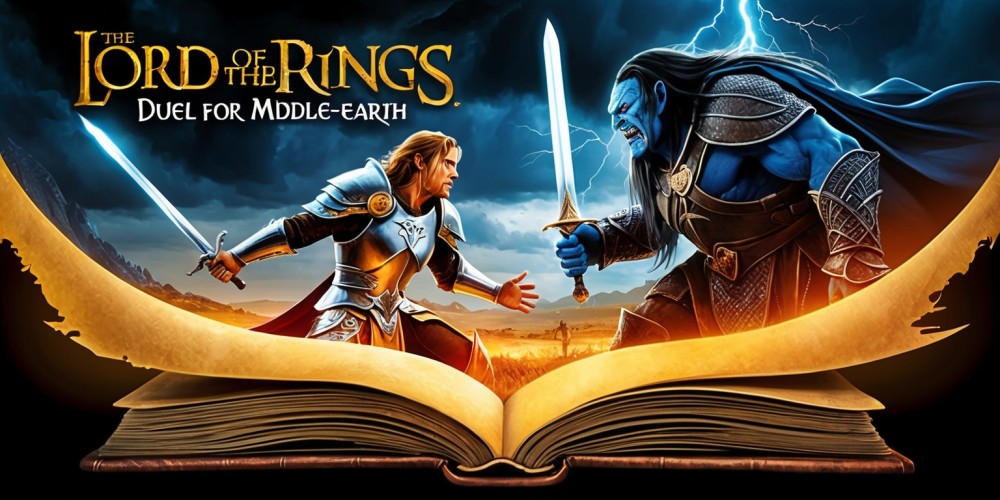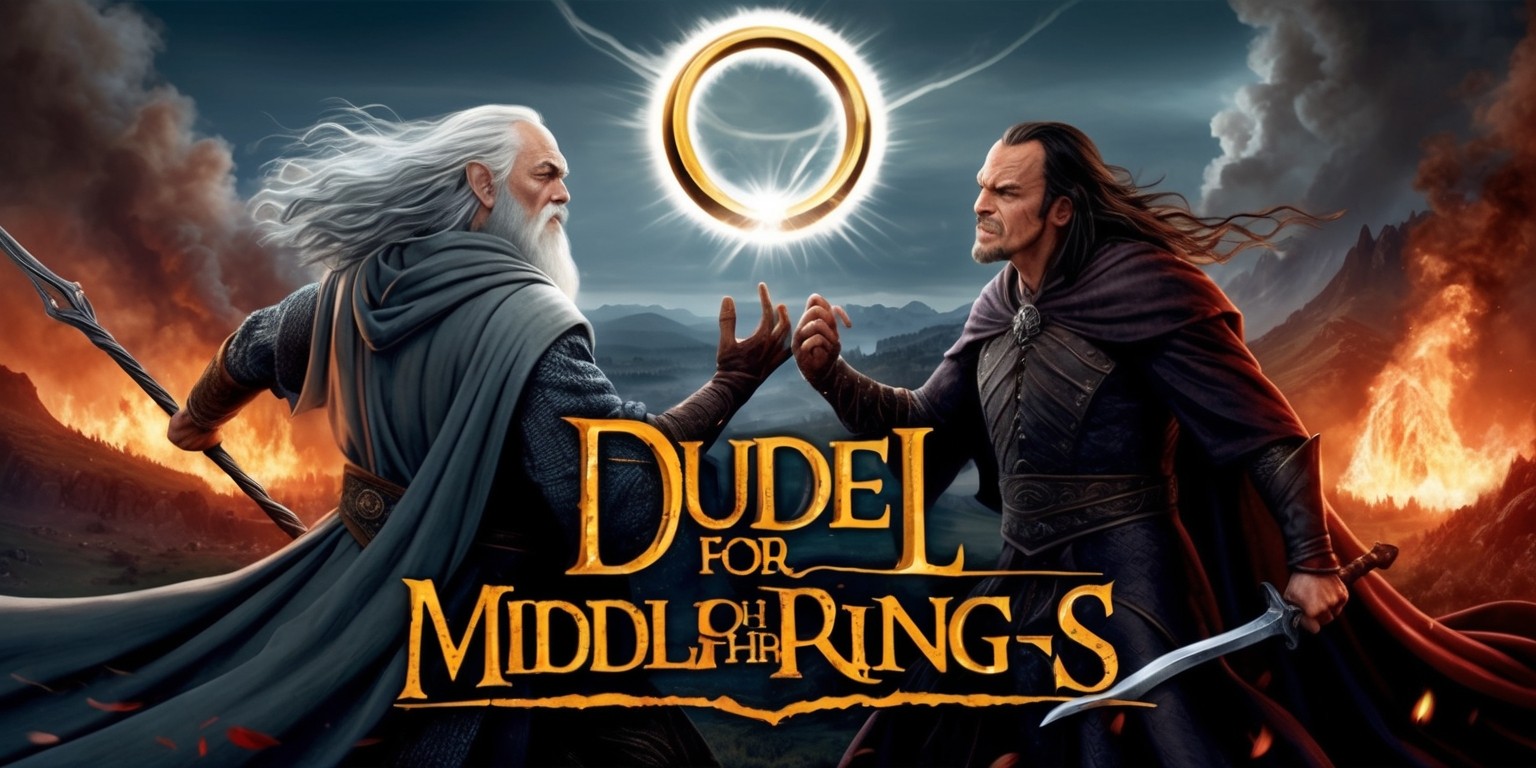Epic Duels in Middle-earth: A Review of Lord of the Rings: Duel for Middle-earth
- 2025-02-24

Board games have always been valued for their ability to create immersive experiences filled with strategy, competition, and rich themes. Among these, card-drafting mechanics have emerged as a favorite, captivating players with their blend of decision-making and interaction. One game that took the core mechanics of these beloved drafting games and adapted it into a compelling two-player experience is 7 Wonders Duel, a spin-off of the immensely popular 7 Wonders. The latest addition to this innovative gaming landscape is none other than "Lord of the title "Rings: Clash for Middle-earth," a gaming experience that invites players into the majestic world created by Tolkien. This review delves into its intricacies, components, and whether it stays true to the heritage of those that came before it.
Reimagining a Classic Format
At its heart, The title "Lord of the Rings: Duel for Middle-earth" refers to built upon the solid foundations established by its predecessors. While card drafting shines in larger groups, its developers skillfully transformed this mechanic into a more engaging duel for two players. Featuring a variety of highly colorful cards adorned with evocative artwork from Middle-earth, the game captivates both enthusiasts of the genre and those new to it.
Card Components and Artwork
Unpacking the game reveals a dazzling assortment of cards with illustrations that truly bring the fantastical world of Tolkien to life. Each card features a color-coded top bar, denoting its type, along with symbols representing its abilities and acquisition prerequisites. While players may not be able to complete the full card panoramas during gameplay, the vibrant visuals serve as a stunning homage to Middle-earth.
Game State Tracking
Beyond cards, the game introduces components that cleverly help track progress through an immersive mini-map of Middle-earth. Delicate wooden tokens represent armies and fortresses, enhancing the gaming experience with tactile elements. The hunt for the ring track is another thoughtful inclusion, featuring a plastic slider that narrows the distance between the hobbits and their dark pursuer, the Ringwraith.
Exploring the Card Pyramid

The gameplay centers on a unique card pyramid structure, echoing the design found in 7 Wonders Duel. Players take turns clearing cards in a combination of upright and reversed orientations, adding depth to their decision-making as they attempt to minimize advantages for their opponents. Positioning of cards becomes vital as players strive to navigate through the tension of each turn.
Expansion Through Specialization
As players build their tableau, they quickly face strategic dilemmas regarding whether to specialize in particular skill sets or cast a wider net. This choice adds layers of strategy, as every card selection drives players’ paths toward victory. Balancing specialization against versatility is one of the primary challenges that will deepen with experience.
Victory Conditions Unveiled
A standout feature of Lord of the Rings: Duel for Middle-earth lies in its victory conditions, which differentiate it from 7 Wonders Duel. Players can advance their quest along the hunt for the ring track, form alliances with factions like the Elves, or conquer territories. The diverse paths to victory offer multiple strategic avenues through which the game unfolds, guaranteeing that each game is distinct from the others.
A Balance of Skill and Luck
Though players’ decisions significantly impact the game, a notable element of chance adds unpredictability. The strategic unveiling of cards can determine the direction of play, raising questions about the balance of skill versus luck. As critical cards emerge from the pyramid, players might find that their carefully planned strategies hinge on the whims of card reveal sequences.
The Role of Fortresses
An original feature of this edition is the fortress mechanic, which introduces an entirely new layer of strategy. These powerful tiles not only bring benefits in line with existing game mechanics but also allow players to secure areas on the map, creating strongholds that their opponents cannot breach. Utilizing fortresses effectively can turn the tide of the game and serves as a valuable tactic to consider.
Thematic Elements at Play
Despite its captivating gameplay, some players may find that the theme occasionally falters. Notably, the ability for Sauron to ally with the Elves and the resulting mismatches can feel counter to Tolkien’s lore. Such incongruities can distract from the immersion and thematic depth that one might expect from a game immersed in such a vibrant literary universe.
Game Duration and Experience
One of the key features of The game titled "Lord of the Rings: Duel for Middle-earth is" its brisk game pace. With an expected playtime of about half an hour, players can enjoy an intense and satisfying session without a lengthy time commitment. This quick turnaround coupled with the formidable strategic choices creates an addictive loop of engaging gameplay.
Replayability and Variability
The variation in card combinations and potential alliances encourages multiple playthroughs. With numerous strategy combinations and chance dynamics, every match presents unique scenarios that keep the experience fresh. This strong replayability factor guarantees that gamers will come back for additional quests time and again.
Group Play Considerations
For those who regularly engage with larger gaming groups, the two-player focus may seem limiting. However, Lord of the Rings: Duel for Middle-earth can serve as a great strategic duel, providing a different dynamic from larger party games. It appeals to players who may prefer head-to-head competition rather than collaboration or larger group strategy.
Conclusion: A Worthy Addition
Ultimately, Lord of the Rings: Duel for Middle-earth proves to be a commendable addition to the genre, successfully morphing beloved mechanics into a captivating duel scenario. While it might not fully capture the essence of Tolkien’s masterworks, its engaging gameplay, customizable strategies, and vibrant artwork make it a worthwhile endeavor for both fans of the genre and newcomers. Whether played for a quick session or an encounter filled with intense approach, this game encourages players to set out on an adventure brimming with excitement through the legendary realms of Middle-earth.





